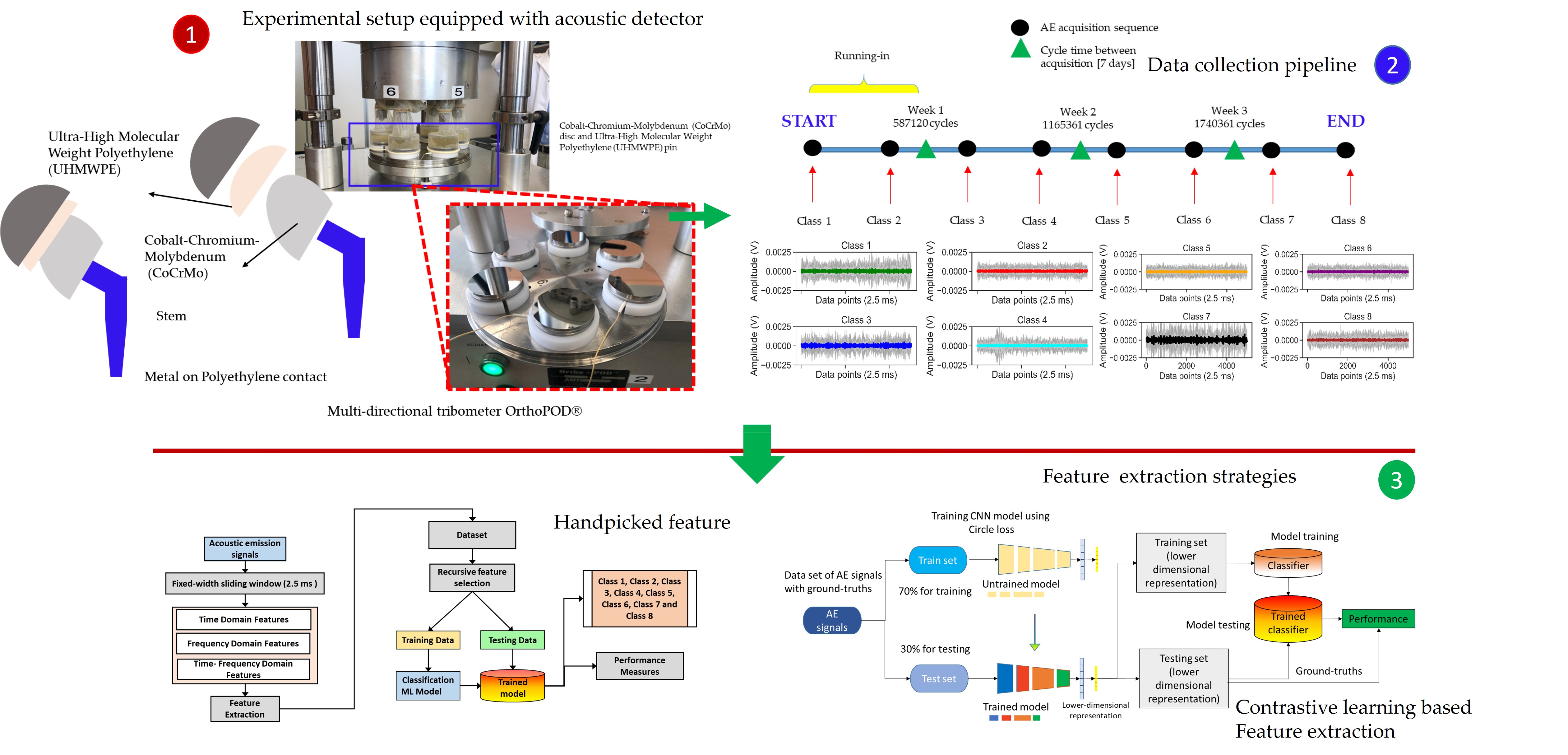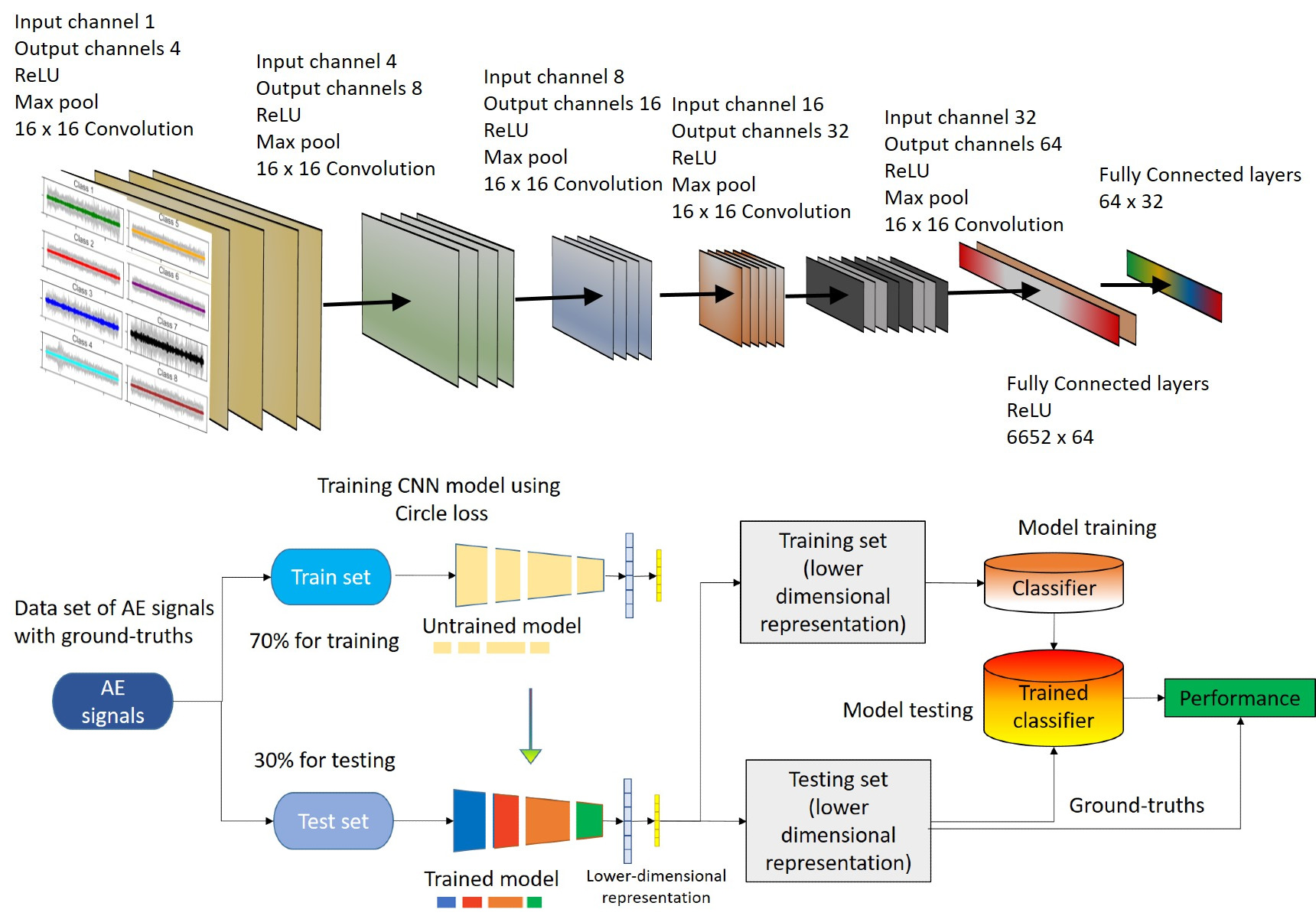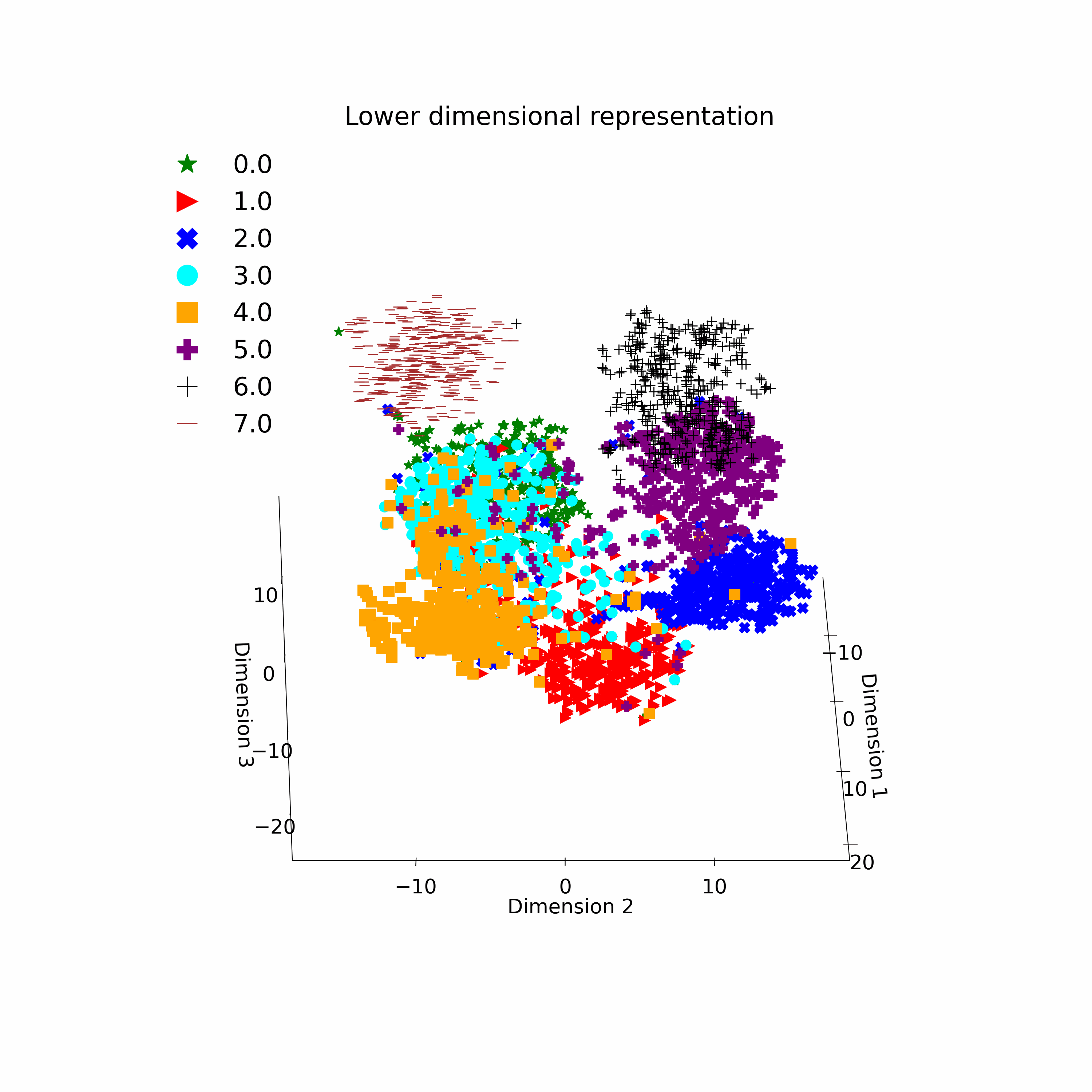Scientific publication
Classification of Progressive Wear on a Multi-Directional Pin-on-Disc Tribometer Simulating Conditions in Human Joints-UHMWPE against CoCrMo Using Acoustic Emission and Machine Learning
Written by Pushkar Deshpande, Kilian Wasmer, Thomas Imwinkelried, Roman Heuberger, Michael Dreyer, Bernhard Weisse, Rowena Crockett and Vigneashwara Pandiyan
Outline
Human joint prostheses face wear and related failure mechanisms due to the complex tribological contact between Ultra-High-Molecular-Weight Polyethylene (UHMWPE) and Cobalt-Chromium-Molybdenum (CoCrMo). This study investigates wear mechanisms with the long term goal to predict failure rates in human joint prostheses. Multi-directional pin-on-disc tests were conducted in a medium simulating real in-vivo conditions to analyze the wear behavior of UHMWPE pins sliding against CoCrMo discs. The objectives were to gain insights into wear mechanisms and to classify wear rates. Real-time wear monitoring was enabled using Acoustic Emission (AE) sensors, capturing signals before and after weekly visual inspections over 2.3 million cycles. This approach facilitated continuous wear data collection and wear progression assessment. Integrating AE sensors proved valuable in detecting wear-related signals, enhancing wear progression detection, and aiding in anticipation of failure. This study presents a novel approach for monitoring wear progression in human joint prostheses using two Machine Learning (ML) frameworks. The first framework involved manually extracting time, frequency, and time-frequency domain features from acoustic signatures based on human knowledge. ML classifiers, including Logistic Regression, Support Vector Machine, k-Nearest Neighbor, Random Forest, Neural Networks, and Extreme Gradient Boosting, were applied for wear classification, achieving an average accuracy between 81% to 89%. The second framework introduced a contrastive learning-based Convolutional Neural Network (CNN) with circle loss to enhance wear classification performance. CNN extracted feature maps from the acoustic signatures, which were then used to retrain the ML classifiers. This approach demonstrated superior classification performance of 94% to 96% compared to manual feature extraction. Machine learning techniques enabled accurate wear classification and improved progressive assessment of human joint prostheses. Automated feature extraction using the contrastive learning-based CNN provided better insights into wear patterns and enhanced the predictive capabilities of ML classifiers. This approach can improve the early detection of wear-related failures and enable timely interventions. The successful implementation of AE sensors for real-time monitoring in lab simulated conditions demonstrates their effectiveness in detecting wear-related signals and supporting proactive measures to prevent wear failures. This unique method of monitoring and predicting wear progression using AE and ML in the UHMWPE-CoCrMo pairing enhances understanding of wear mechanisms in UHMWPE. This knowledge can guide the development of more reliable and durable prosthetic joint designs.

Reference
Deshpande, Pushkar, Kilian Wasmer, Thomas Imwinkelried, Roman Heuberger, Michael Dreyer, Bernhard Weisse, Rowena Crockett, and Vigneashwara Pandiyan. "Classification of Progressive Wear on a Multi-Directional Pin-on-Disc Tribometer Simulating Conditions in Human Joints-UHMWPE against CoCrMo Using Acoustic Emission and Machine Learning." Lubricants 12, no. 2 (2024): 47.
Methodology
This study introduced a novel approach for monitoring wear progression in human joint prostheses simulated on a laboratory scale by employing two ML frameworks. The first framework involved manual feature extraction based on human knowledge, while the second framework utilized a contrastive learning-based CNN with circle loss for automated feature extraction. The results showcased significant improvement in wear classification performance achieved through the integration of machine learning techniques compared to manual feature extraction.

Results

